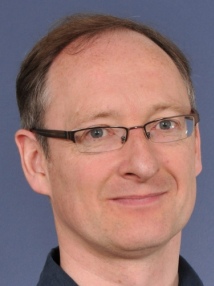Complexity
I am interested in statistical mechanics, phase transitions and non-equilibrium problems in general. Philip Ball's book "Critical Mass" is a good non-technical introduction to the general topic. Some of my work involves Complex Networks for which I have some separate Complex Network pages. See my old review in Contemporary Physics 45 (2004) 455-474 (or cond-mat/0405123). I have a particular interest in networks constrained by space or by time.
I am interested in the pure theoretical aspects of these topics. For instance, I have looked at the relationship between closeness and degree, two of the most popular centrality measures which capture the importance of each node in a network. However, I also work in a wide range of different applications.
My interest in networks constrained by space has led me to look at spatial networks where geographical space plays an important role in controlling interactions. In particular, through an EU funded collaboration, ISCOM (see below), I have a long-standing collaboration with archaeologist Carl Knappett from Toronto University. Along with Ray Rivers from Imperial, we have several papers outlining our work combining Complexity and Networks with archaeological problems starting from our work on networks of Minoan settlements.
My interest in networks constrained by time is seen in various papers looking at the properties of directed acyclic graphs. This has included my theoretical study of longest paths in Price models (directed Barabasi-Albert models). In terms of applications, this topic is related to my longstanding interest in the social science of bibliometrics, the "science of science". This is because the simplest example of a directed acyclic graph is a citation network. In a citation network each document is a node. If the bibliography of one document lists a second document, we put a directed edge from the node of the newer document with the bibliography to the node representing the older document listed in the bibliography.
I have a website netplexity with more information on my work with complex networks and complexity in general.
Older Work

Thermal Field Theory
My PhD and research before 2004 was on Thermal Field Theory. Also known as Finite Temperature Field Theory, this looks at many body problems where the underlying dynamics is described by quantum field theory. I worked on both the formal aspects of the theory and on applications in fields such as particle physics and cosmology. For instance I was the first to show exactly what the oldest and best known method, the Matsbara formalism using imaginary time, was calculating for calculations of general dynamical quantities. As part of that work I defined a new sequence of integers, 2, 6, 32, 370, 11292, 1066044, 347326352, 419172756930, which is Sloane sequence A034997. This has been revisited using different techniques.
Finding My Research Outputs

My Orcid number is https://orcid.org/0000-0003-3501-6486 and most of my work, even the older material now, can be found through that. I have always used arXiv to post free versions of my work whenever I can so search for T.S.Evans on arXiv though that misses much of the archeoalogical work and some that was prevented by publisher's copyright demands. The Tim Evans Google scholar page picks up most of my research output inclusing talks or datasets not always found in other lists. I often use figshare for research outputs that are not papers so the Tim Evans figshare page will list these items.
My family name is very common so while I always give my name in the form "T.S.Evans", sometimes it appears in other forms such as T.Evans and Tim Evans. There are even instances where citations to my papers have been wrongly assigned to other researchers with the same surname.
Collaborators
EPSRC NetworkPlus: Emergence and Physics far from Equilibrium, University of Warwick, Imperial College, University of Manchester,Oxford University, Cambridge University, King’s College London, University of Bath, University of Aberdeen, Durham University, UCL, University of Southampton, University of Leeds, University of Edinburgh, Royal Holloway, University of Nottingham, Lancaster University, I am the node leader for Imperial, as part of our participation in an EPSRC NetworkPlus addressing one of EPSRC's Physics Grand Challenges: Emergence and Physics Far From Equilibrium. The proposal is entitled 'Towards consensus on a unifying treatment of emergence and systems far from equilibrium'., 2012 - 2015
Dr Daniel Hook, Theoretical Physics, Imperial College London;Visiting Professor at Washington University in St Louis, Missouri
Dr Pietro Panzarasa, Queen Mary University of London, Organisational Theory and Behaviour
Dr Renaud Lambiotte, Department of Mathematics/NaxysUniversity of Namur, Complex Networks
Doug Plato, Imperial College London, Theoretical Physics
Dr Carl Knappett, University of Toronto, Archaeology
Prof Ray Rivers, Imperial College London, Theoretical Physics
Prof Dimitri Vvedensky, Imperial College London, Coauthor of text book on Group Theory.
Guest Lectures
Netplexity - Networks and Complexity for the Real World, Second annual Student Conference on Complexity Science, Oxstalls Campus, University of Gloucestershire, 2012
Scaling and Citations, Oxford University, Said Business School, 2011
The Mathematical Description of Networks, Feza-Gürsey Institute, Istanbul, 2011
Netplexity - The Complexity of Interactions in the Real World, Fez Gürsey Institute, Istanbul, 2011
Interactions In The Aegean Bronze Age, University College London, Invited talk at meeting on "Cultural Evolution in Spatially Structured Populations", 2010
The Mathematical Description of Networks, University of Manchester, 2010
Randomness and Complexity in Networks, Centro di Ricerca Matematica Ennio de Giorgi Scuola Normale Superiore, Pisa, 2007

